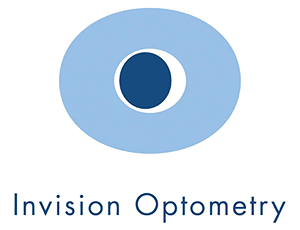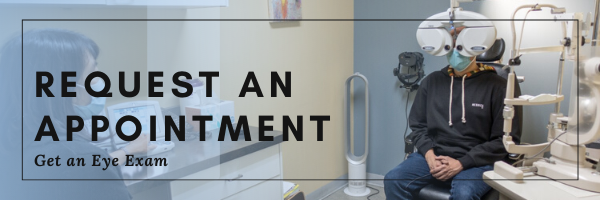About Your Eyes
Computer Vision Syndrome
With many working at home with less social interaction, we find ourselves looking at our electronic devices more for contact with the outside world. This leads to “computer vision syndrome”, or “digital eye strain”.
The symptoms may include tired eyes, blurred vision (near, far, or both), dry eyes, or headache.
The reasons for this condition are many including the muscle work of close focusing and the nature of the back-lit device screen.
Know that the closer the device, the more the muscles have to contract to make the image clear and coordinate the two eyes. The studies showed a reduced rate of blinking when looking at a computer compared to hard copy, but later studies refuted this.
If you are older, most commonly 45 years old or more, the maximum close focus ability is marginal at common working distances. This is why many people in this age group receive a prescription for reading glasses or multifocal lenses.
Assuming proper vision correction is in place if required, and there is no other eye or vision condition, computer vision syndrome can still exist. Here are a few things to help avoid that:
- Good workstation ergonomics including a recommended distance to the screen of 16-28”
- For a desktop workstation, the middle of your screen should be slightly down gaze (15 degrees), which means when you are looking straight ahead, you should be looking approximately at the top edge of your monitor
- Set your font size to be reasonable
- A bright light source should NOT be behind the device
- Take frequent breaks from looking at your device: look far away for 30 seconds every 15 minutes (that’s only a total of 2 minutes/hour)
- If you have special glasses for working at your computer or up close, wear them
Unreliable sources cite blue light recently to cause physical damage to the eyes. There is no hard scientific evidence of physical damage to ocular tissue from blue light emission, especially the low intensity from a device screen, even if prolonged. Separately, the evidence of sleep pattern disruption when viewing blue light in the evening does seem to have merit.
Anecdotally, there seems to be more visual comfort with reduced blue light, and if that is the case, change the screen background hue if possible, or we can recommend an appropriate filter in a pair of glasses.
Sometimes a special prescription computer glasses will help avoid “computer vision syndrome“. The glasses may correct focus or eye-teaming related inefficiencies not revealed during other tasks.
If you are experiencing Computer Vision Syndrome and want a customized treatment plan, contact us
Dredna@invisionopto.com
Dr.c@invisionopto.com
Here is a great link to information about this: https://www.aoa.org/patients-and-public/caring-for-your-vision/protecting-your-vision/computer-vision-syndrome

